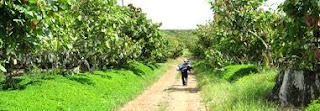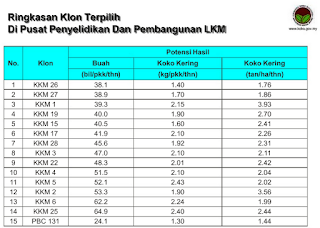Thursday, November 10, 2016
Sunday, November 6, 2016
Lund2002SabahSmallholder.pdf - 616 KB
Lund2002SabahSmallholder.pdf - 616 KB
Study on Cacao smallholder in Sabah
Friday, November 4, 2016
Thursday, November 3, 2016
Sunday, October 30, 2016
Monday, October 17, 2016
Tuesday, October 11, 2016
Sunday, October 9, 2016
Rapid Composting Technology in the Philippines: Its Role in Producing Good-Quality Organic Fertilizers
Institute of Biological Sciences (IBS),
College of Arts and Sciences,
University of the Philippines at Los Baños,
College, Laguna, Philippines, 1997-10-01
Abstract
Commercial Compost
When commercially-produced compost is used, 500 - 750 kg/ha should be applied (10 - 15 bags, 50 kgs each) as basal fertilizer. As with the farm compost, half of the recommended level of chemical fertilizers should be applied 30 - 45 days after transplanting.It can be seen that the recommended level of compost to be applied by farmers when they make it themselves is higher than when commercial compost is used. Experience has shown that the compost produced on farms has a very low N, P and K content, because only small amounts of nitrogenous substrates are used for composting. Table 1(573) shows that farmers' compost contained only 1% of N, P and K. Farmers have difficulty in obtaining large amounts of animal manure. Filipino farmers do not usually confine their draft animals in feedlots, but graze them in the open field, which makes it difficult to collect the livestock manure.
Commercially produced compost is regulated by the FPA. For a product to be registered as a commercial organic fertilizer, it must contain a total of at least 7% of the three main elements, N, P and K, and at least 10% carbon. The National Program requires that of this 7%, the N content is not lower than 1.5%, while P and K make up the remainder. Thus, commercial compost has a much higher N, P and K content than the compost produced by most farmers. To compensate for the low nutrient content of compost produced on farms, larger quantities of the fertilizer are therefore recommended.
Saturday, October 8, 2016
Saturday, September 3, 2016
Indonesia Invest Rp1.2 Trillion to become world's No.1 Cacao Producer by 2020
....Ketika berdialog dengan warga, Presiden me–
ngatakan bahwa pemerintah telah menganggarkan dana Rp1,2 triliun un-
tuk memperbaiki perkebunan kakao Indonesia. Anggaran tersebut dihimpun
untuk mendukung target Indonesia menjadi produsen kakao terbesar dunia
pada 2020....
Link: http://www.slideshare.net/IgorRangga/cokelat-10emailv2
Malaysian Cocoa Board - ICCO - CABI Market Studies (STDF, Hussain, June2014)
What's your type.... chocolate?
Cacao Sabah Planter..... chef?
Cacao farm planting material variety, will this combination be a winner!
Planting at least 3 cacao variety, preferably clonal grafted cacao variety is recommended by commercial cacao farming. Presently, considering P&D susceptibility, fine-flavor traits and productivity of each available cacao variety, is this combination good enough to storm the weather of sustainability for the next 20-years of the cacao farm economic life: BR25 + CH2 (USM) + W10 (ACS,Davao)
Friday, September 2, 2016
Malaysian Cacao Clone... recommended variety
Link: http://animhosnan.blogspot.com/2015/01/koko-varieti-di-syorkan.html
Cacao innovations... study to utilize cacao pod husks for fibre-glass production
Link: http://eprints.utem.edu.my/5189/2/A_Mechanical_Study_On_Cocoa_Husk-Glass_Fibre__Polypropylene_(PP)_Hybrid_Composite.pdf


















































